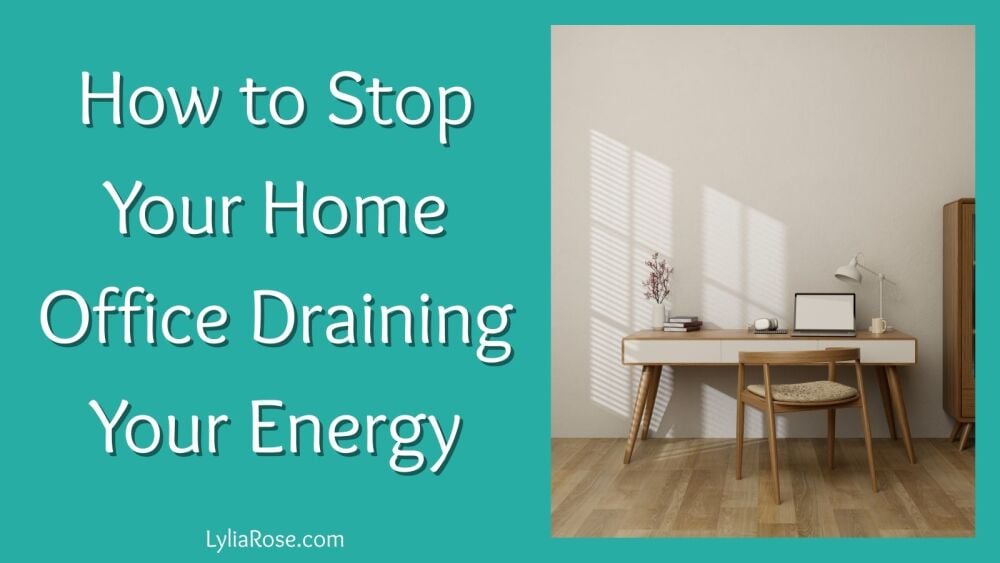How to Stop Your Home Office Draining Your Energy
Posted on
Ever finish a day working from home and feel like your soul’s been wrung out a bit? It’s odd, isn’t it — feeling that tired from your own home? You’ve got the nice furniture, maybe a stylish desk, cool office furniture and décor you actually like, but something about the space just feels… flat.
The truth is, most home offices weren’t designed for long-term living. They started as quick fixes — a spare room, the end of the dining table, or the spot where your Wi-Fi signal happens to behave. But as the months roll on, that “temporary solution” can start to drain your energy without you even noticing.
If you’ve ever hit that mid-afternoon slump and blamed burnout or caffeine withdrawal, it might not be you at all — it might be your space. Let’s look at why your home office might be quietly zapping your motivation, and how to change that.

Light Makes or Breaks a Workspace
Lighting is the single most important element of any workspace. And yet, most home offices are lit like basement car parks — harsh overhead bulbs, dark corners, and maybe a desk lamp doing its best to help.
Natural light isn’t just a “nice to have” for aesthetics. It directly affects your focus, energy levels, and circadian rhythm — your body’s natural sleep–wake cycle. If your workspace feels dull, you feel dull. It’s that simple.
Your brain’s wired to chase sunlight. Without enough of it, your body gets confused and thinks it’s dusk all day, which explains why that post-lunch energy dip feels impossible to shake.
A simple lighting fix
If you can, move your desk closer to a window. Even indirect daylight boosts alertness and mood. If that’s not possible, use daylight bulbs with a colour temperature around 5000K — bright but natural. Avoid warm, yellow light for your workspace; save that for your living room.
And don’t underestimate reflection. A white or pale wall near your desk bounces light around, instantly lifting the space. Small changes like this can genuinely shift how you feel while working.
Does Your Office Feel Like a Box?
Let’s be honest — there’s nothing more soul-sucking than working in a space that feels like it’s slowly closing in. Stale air, dim corners, no sense of flow… it all adds up.
A good home office should feel open but still private. The aim isn’t to sit in the middle of family chaos, but to feel connected to your home, not sealed off from it.
If your workspace feels cramped, think about how light and air move through it. If possible, pick a spot with at least one window you can open. Fresh air alone can reset your mood and improve focus more than another cup of coffee ever will.
And if you’re stuck with a small or windowless room, there are ways to make it feel more alive. Transparent or glass-panelled doors can bring in borrowed light from adjoining rooms. You can even explore options like partition walls or glass internal doors from www.steeldoorcompany.co.uk to help open up the space visually. It’s an investment, yes — but one that makes a difference if you’re in your office every day.
Mood, Movement, and Mental Space
A dark, cluttered, or low-energy office doesn’t just look dull — it affects your mental state. You need to feel awake, alert, and inspired in your workspace, not boxed in.
Start with the basics:
-
Declutter. Every surface matters. Clutter creates visual noise and low-grade stress, even when you think you’re used to it.
-
Add life. A plant or two makes a huge difference. Greenery naturally softens a room and subtly boosts mood.
-
Add scent. A few drops of essential oil (think citrus or peppermint) can freshen stale air and sharpen focus.
Caffeine might be the go-to fix for flagging energy, but it's not even all that good for you and sometimes, what you really need is movement. Get up, stretch, or walk to another room every hour. Your brain resets when your body moves.
If you’re self-employed or freelance, you probably spend hours each day at that same desk. So treat your environment as part of your work toolkit, not just background décor.
Design a Space That Supports You
Working from home is amazing for flexibility, but it also blurs boundaries between life and work. Without structure, your workspace can start to feel like a cage instead of a creative zone.
To shift that energy:
-
Create visual separation. Even a rug or room divider can define your workspace from the rest of your home.
-
Change your perspective. If possible, face your desk toward natural light or a calming view rather than a wall.
-
Keep it personal. Add a photo, artwork, or quote that reminds you why you’re doing this work.
Small design decisions like these might seem cosmetic, but they have a real impact on productivity and wellbeing. Your space should work with you, not against you.
The Science of a Happier Workspace
Researchers have found that well-lit, thoughtfully designed environments can significantly improve focus and reduce stress levels. And that’s not just theory — it’s visible in how you feel.
Working in a dim, stale, or cluttered space tricks your brain into fatigue mode. It’s like asking your mind to run a marathon in bad shoes. On the flip side, good light, open flow, and a hint of nature (like houseplants or fresh air) tell your nervous system you’re safe and alert. That’s when creativity and motivation naturally return.
And here’s the best part — you don’t need to spend a fortune.
Rearranging your desk, changing a bulb, or giving yourself a view of daylight can transform how you work. The payoff? More focus, less burnout, and a workspace that supports your goals instead of sapping your drive.
Your Home Office Should Give You Energy, Not Take It
Your home office should be a place that helps you thrive — where work feels balanced, creative, and intentional.
It’s not about perfection. It’s about building a space that fits how you work best. Whether that’s flooding the room with light, adding a plant, or finally saying goodbye to that uncomfortable chair, small improvements build long-term energy.
If you work for yourself or spend hours at home in front of a screen, your space is part of your success story. Make it somewhere that fuels your motivation — not drains it.
